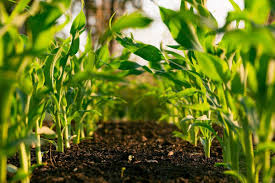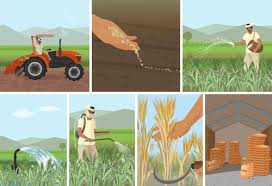
Agricultural Export Strategies
By HNK Globals Institute
Agricultural export strategies are frameworks designed to promote and enhance the export of agricultural products to international markets. These strategies aim to maximize economic gains, improve trade relationships, and support the growth of the agricultural sector by ensuring competitiveness, quality, and sustainability.
Key Features:
- Market Research: Identifies high-demand international markets and aligns products accordingly.
- Quality Assurance: Adopts global standards like HACCP, ISO, and organic certifications to ensure product quality.
- Trade Agreements: Leverages bilateral and multilateral trade deals to reduce tariffs and trade barriers.
- Product Diversification: Promotes a variety of agricultural goods to meet diverse market needs.
- Branding and Marketing: Builds a strong identity for agricultural products in international markets.
- Supply Chain Optimization: Streamlines logistics to ensure timely delivery and reduce costs.
- Sustainability Focus: Emphasizes eco-friendly and sustainable farming practices to appeal to environmentally conscious markets.
- Export Financing: Provides financial support to exporters through loans, subsidies, and grants.
- Digital Platforms: Uses e-commerce and online marketplaces to access global consumers.
- Capacity Building: Trains farmers and exporters on compliance with international trade regulations.
Advantages:
- Economic Growth: Boosts GDP through increased foreign exchange earnings.
- Market Expansion: Provides farmers and agribusinesses access to larger, global customer bases.
- Job Creation: Generates employment opportunities in farming, logistics, and trade sectors.
- Technology Transfer: Encourages the adoption of advanced agricultural practices to meet global standards.
- Value Addition: Promotes the export of processed goods, increasing profitability.
- Trade Relationships: Strengthens bilateral ties and opens doors for future economic partnerships.
- Price Stability: Diversifying markets reduces reliance on domestic demand, stabilizing prices.
- Improved Competitiveness: Encourages innovation and efficiency in the agricultural sector.
- Sustainability Advocacy: Promotes eco-conscious farming techniques aligned with global trends.
- Knowledge Sharing: Enables access to international expertise and best practices.
Key Components of Export Strategies:
- Policy Support: Governments must create favorable export policies, such as tax exemptions or incentives.
- Infrastructure Development: Build cold storage, transportation networks, and ports to facilitate export logistics.
- Trade Missions: Participate in international trade fairs and exhibitions to showcase products.
- Certification Programs: Ensure products meet global safety and quality standards.
- Export Hubs: Establish dedicated zones or regions for export-oriented agriculture.
- Partnerships: Collaborate with global importers, distributors, and retailers for market access.
- Risk Management: Implement insurance and hedging strategies to mitigate trade risks.
Examples of Successful Export Strategies:
- Netherlands: Known for its advanced agricultural technology and efficient export systems.
- India: Focuses on exporting spices, rice, and tea, backed by geographical indication (GI) tags.
- Australia: Capitalizes on its high-quality livestock and wine production for export.
Agricultural export strategies are critical to the global integration of a country’s agricultural sector. By focusing on innovation, sustainability, and market competitiveness, these strategies ensure long-term success and resilience in the international marketplace.








